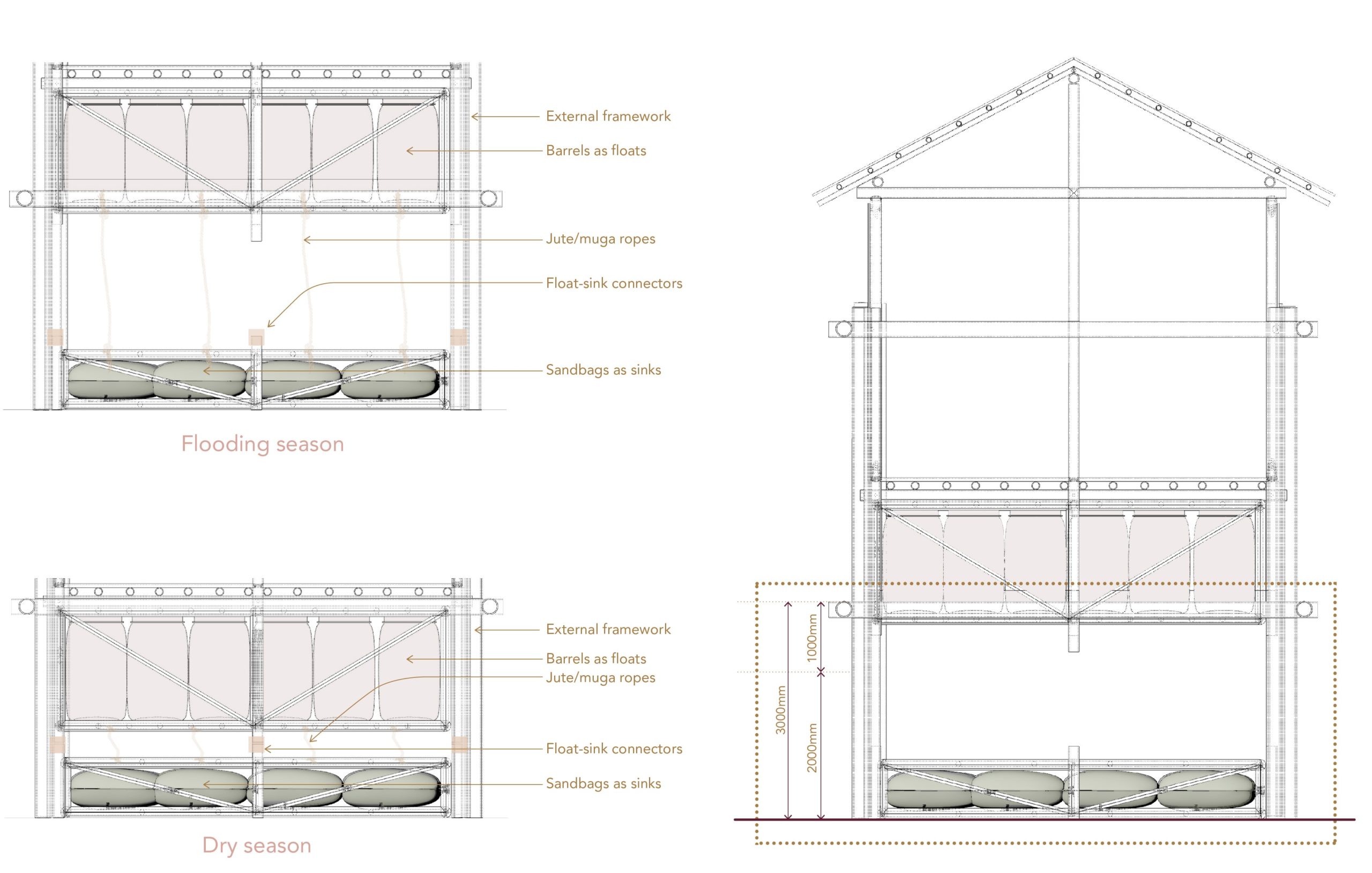Amphibious retrofit systems for existing stilt houses to counteract floods along the Brahmaputra river plains in Assam, India
Abstract
Imagine a situation in life, where you were periodically afraid of your house getting washed away by intense floods, and always had to be alert and prepared! The fear of losing everything you have. Not a good feeling, is it? The same goes for the Mishing tribe in Assam, who have been living nomadically along the plains of the Brahmaputra. They have evolved well over the years, learning to adapt to the elephantine forces of the water and coexisting with the river. But in the recent years, the impetuosity of the flash floods have been unpredictable and difficult to keep up with.
Context
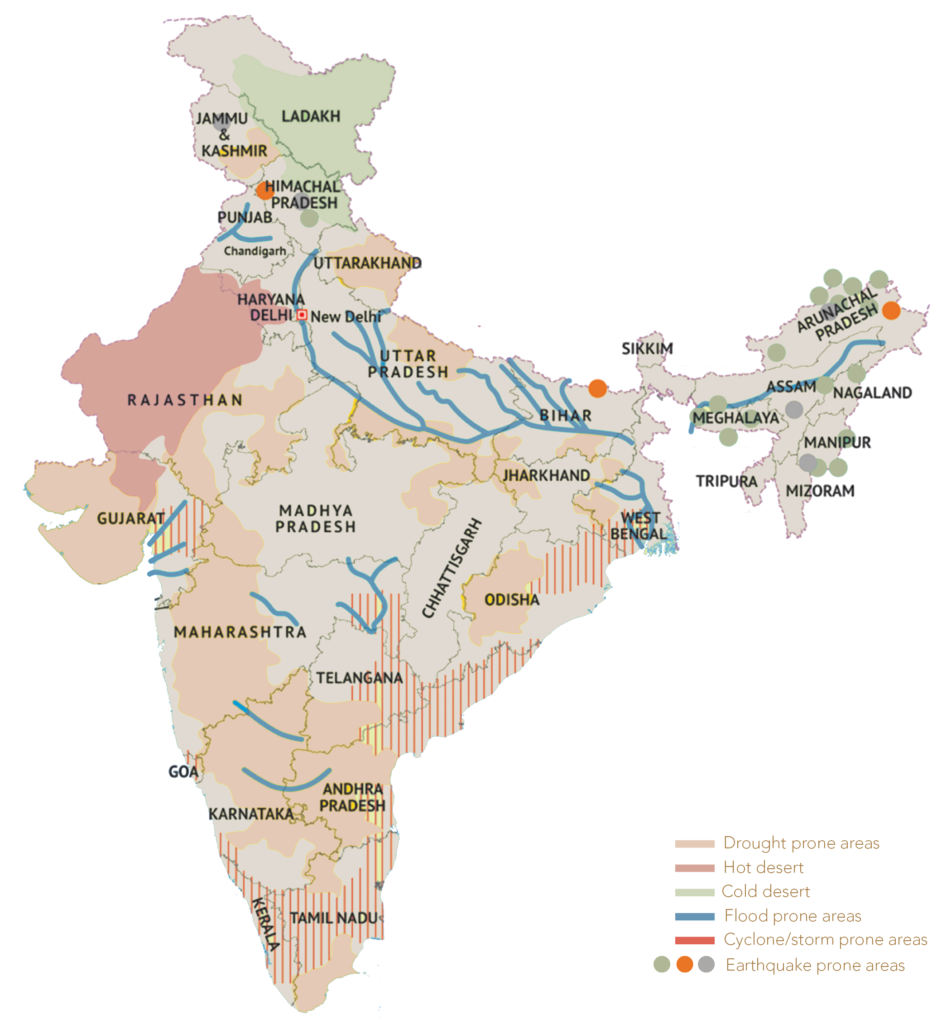
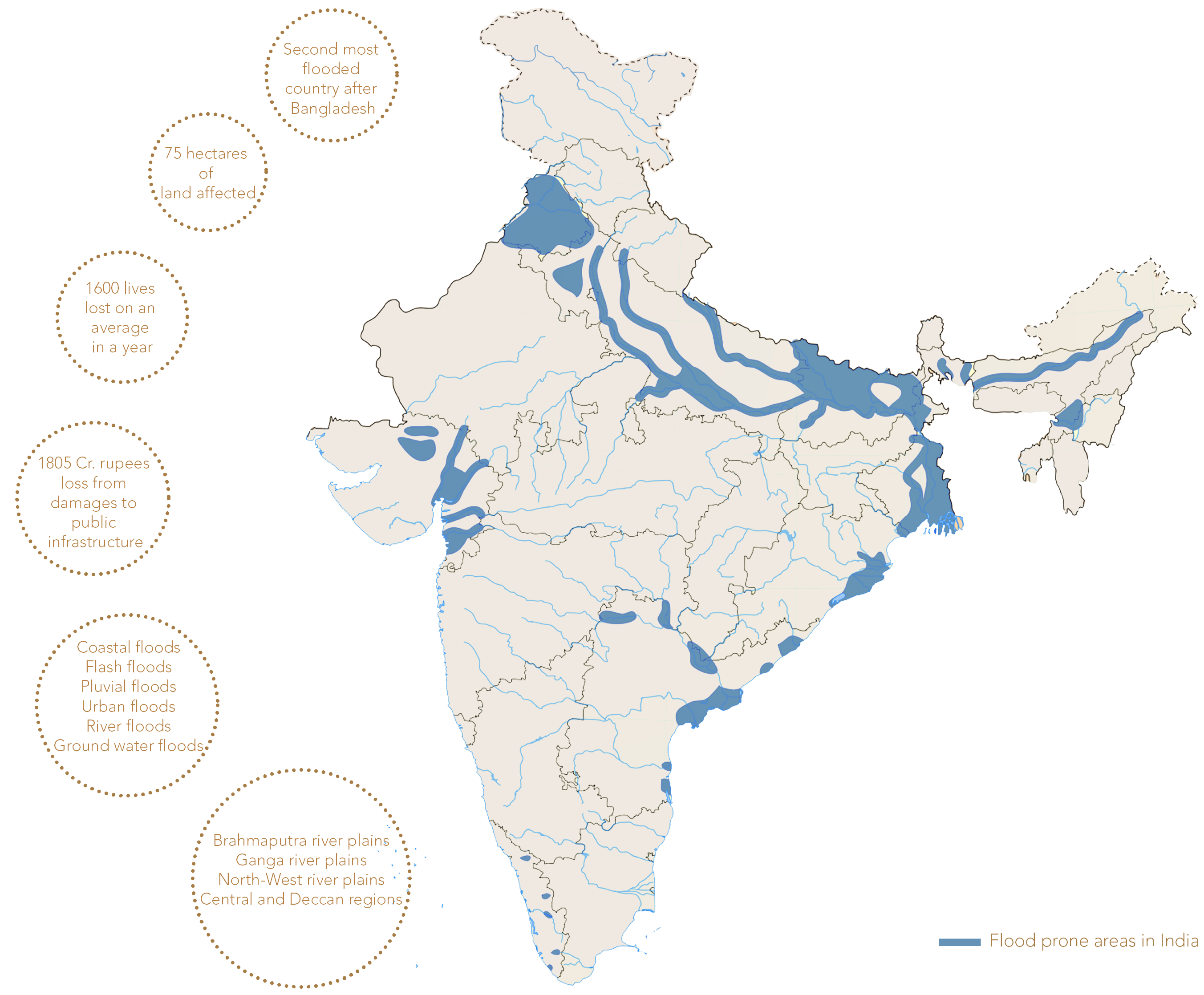
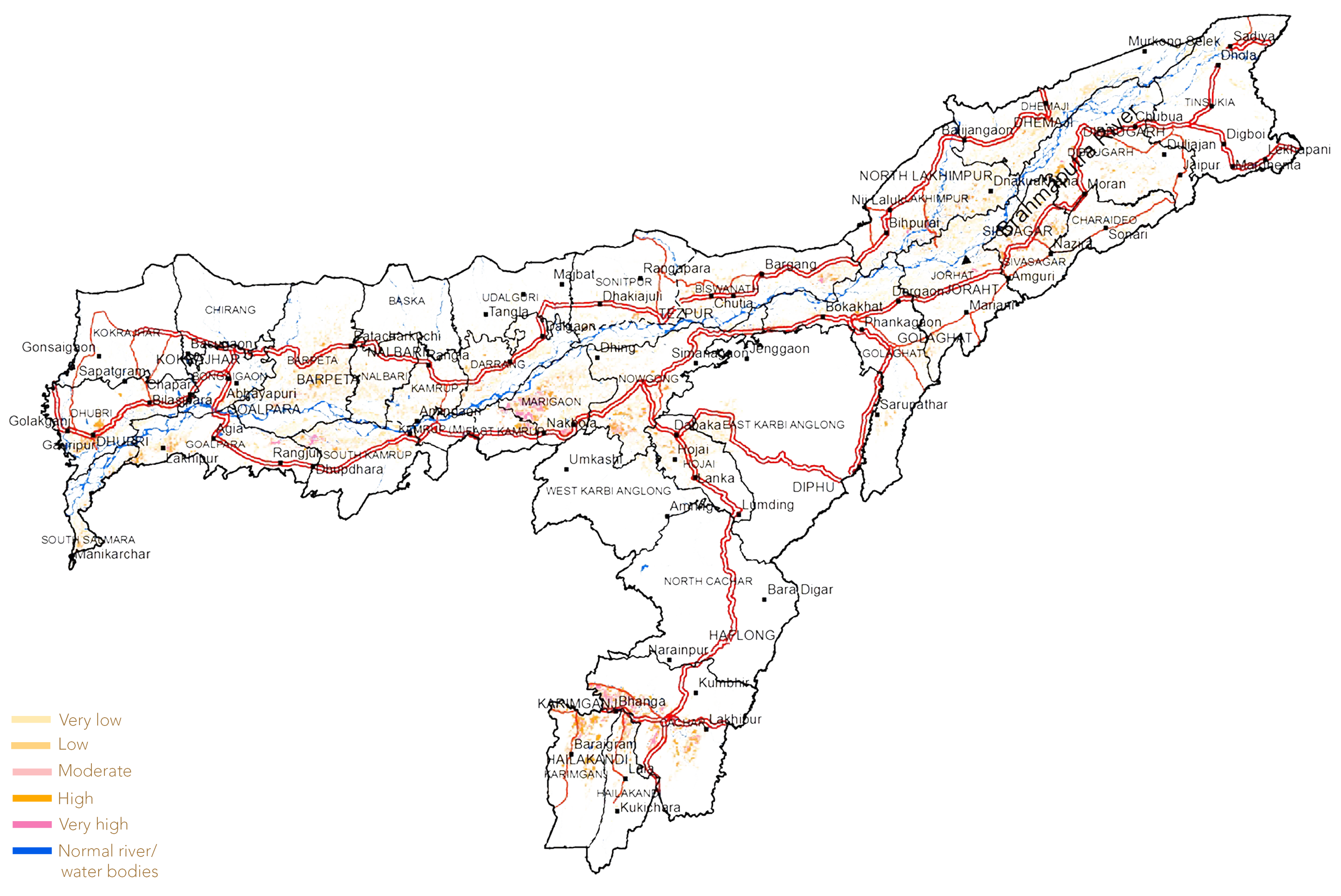
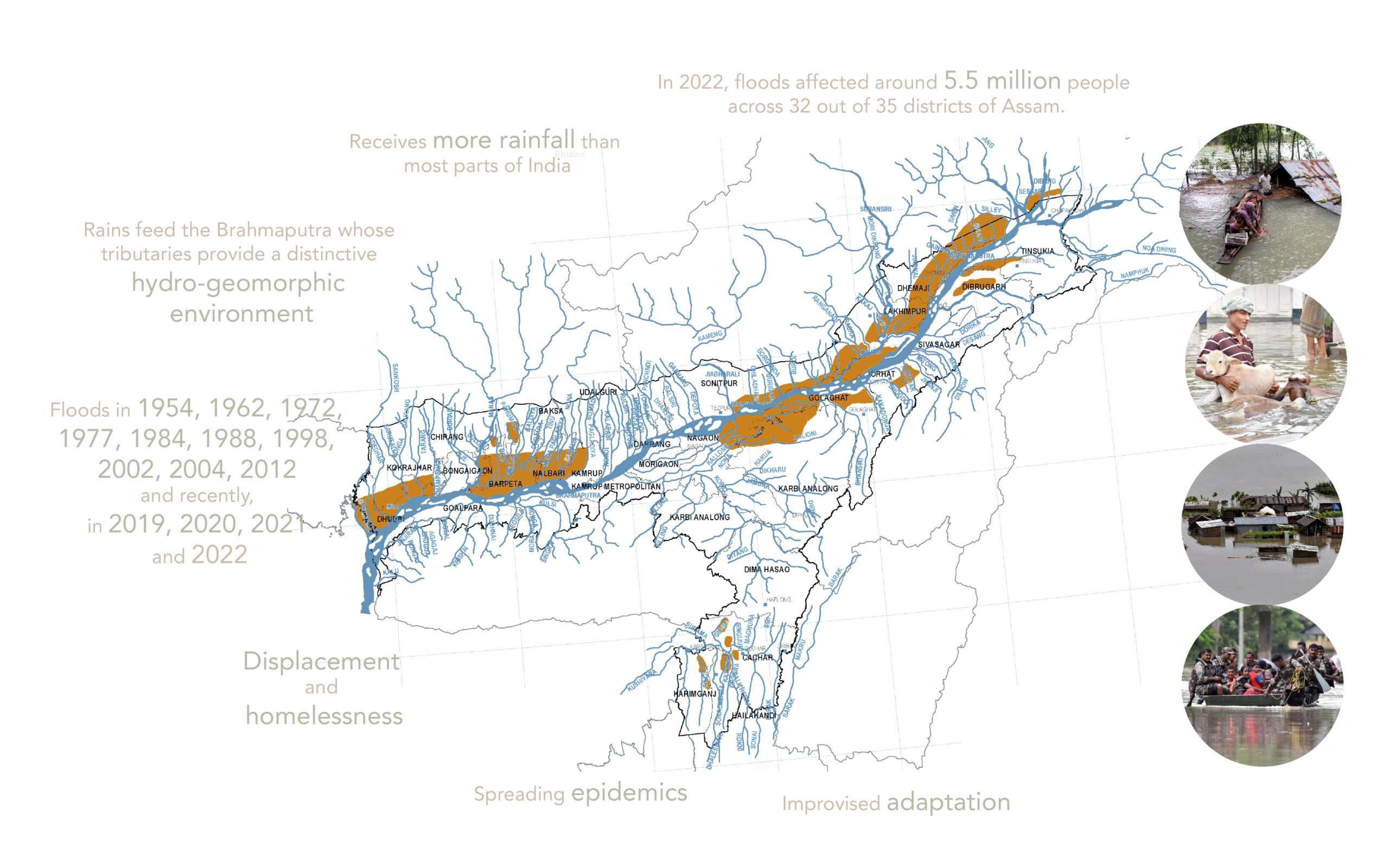
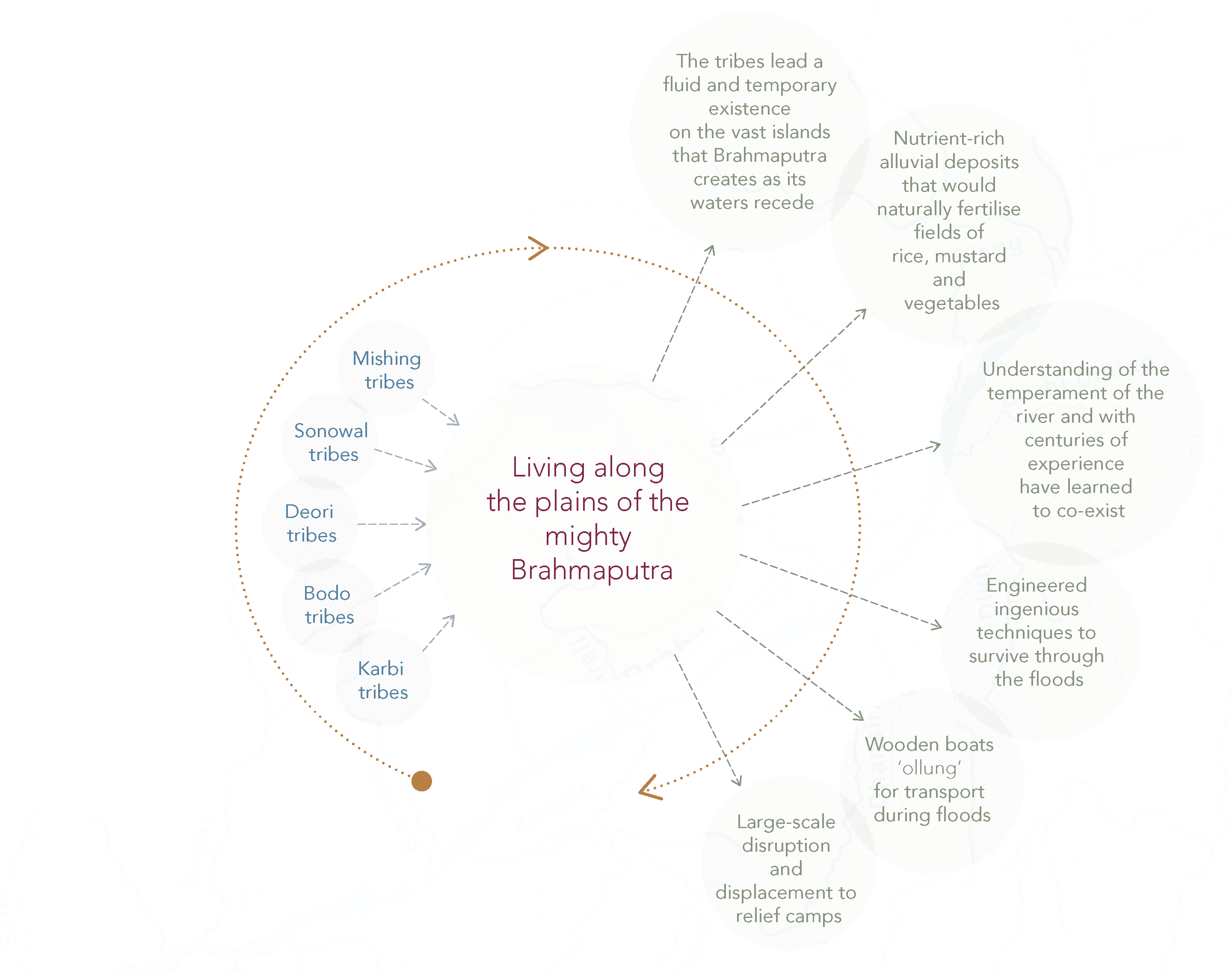
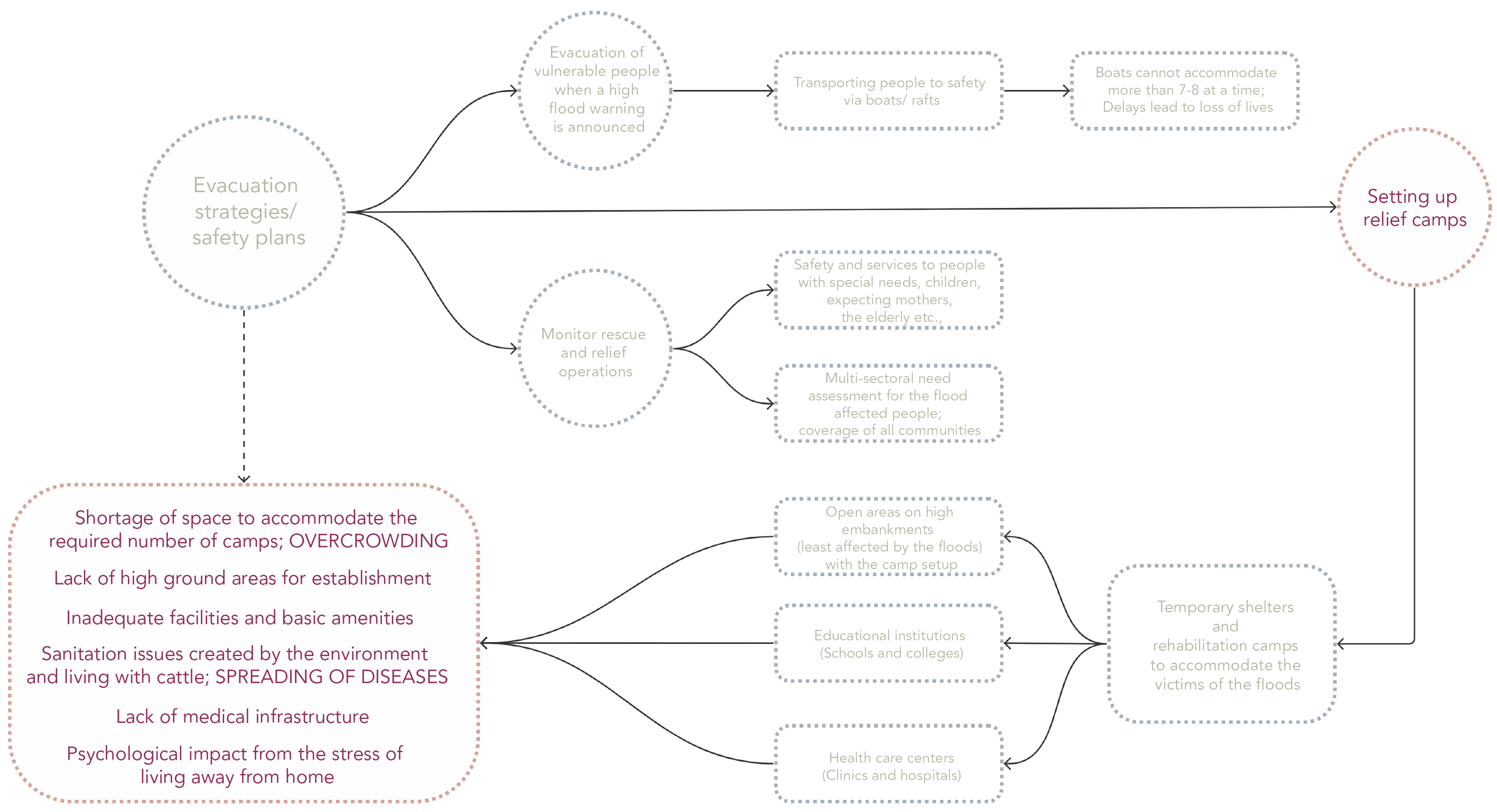
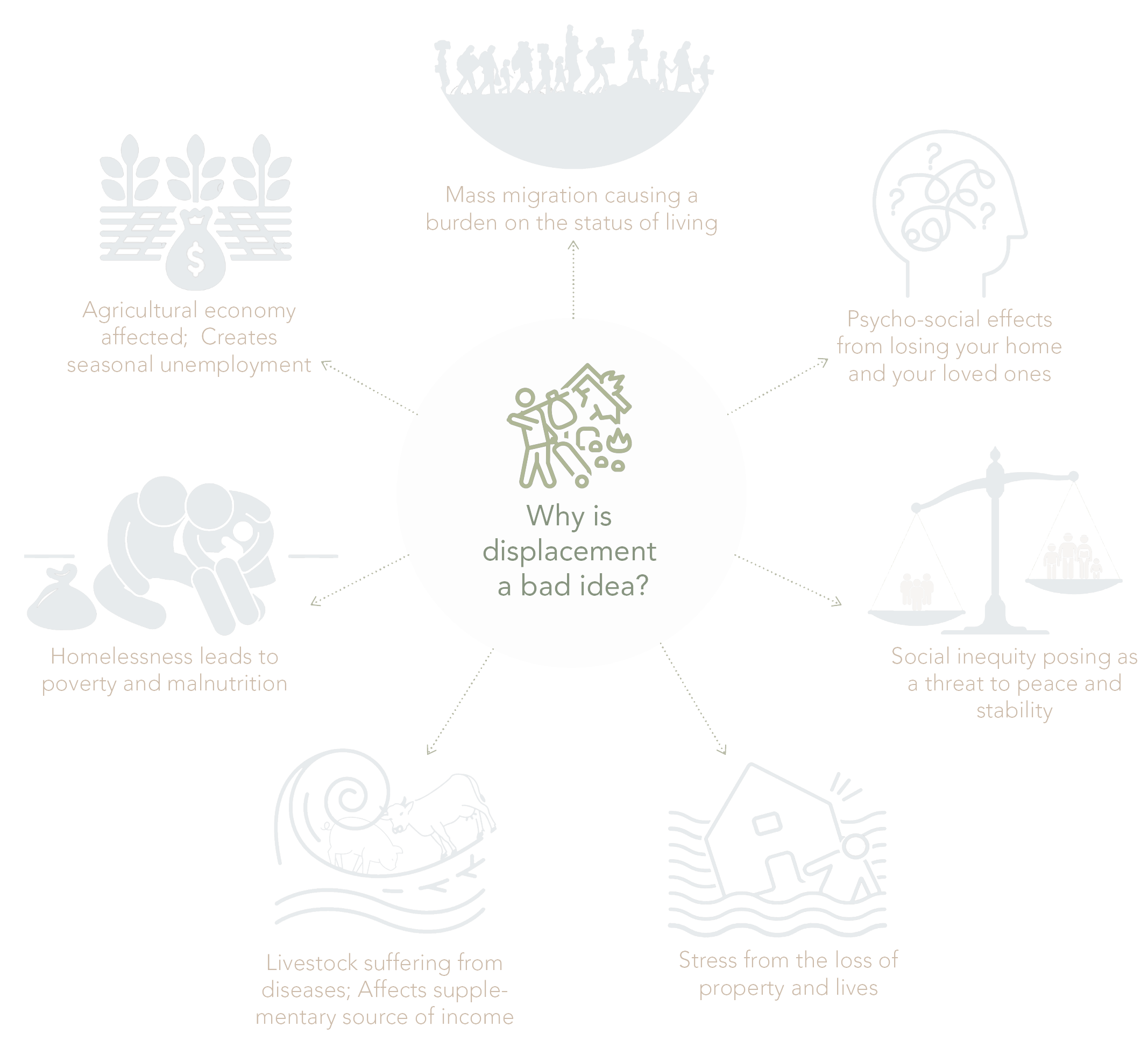
Surely, the solution can’t be to organize more relief camps. What if we focused on increasing the resilience within the existing infrastructure?
Adaptation 01: The Mishing ‘Chang ghors’
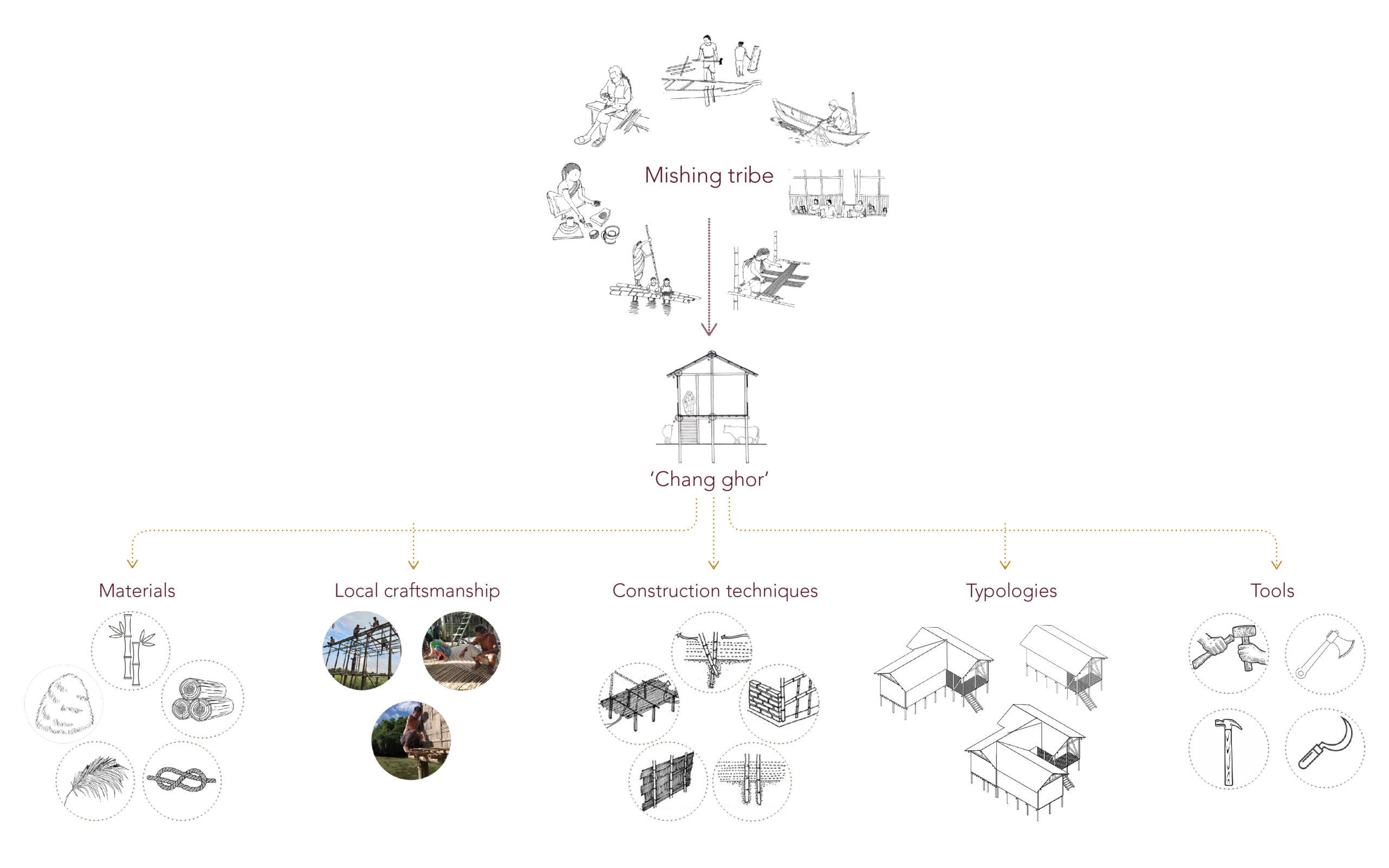
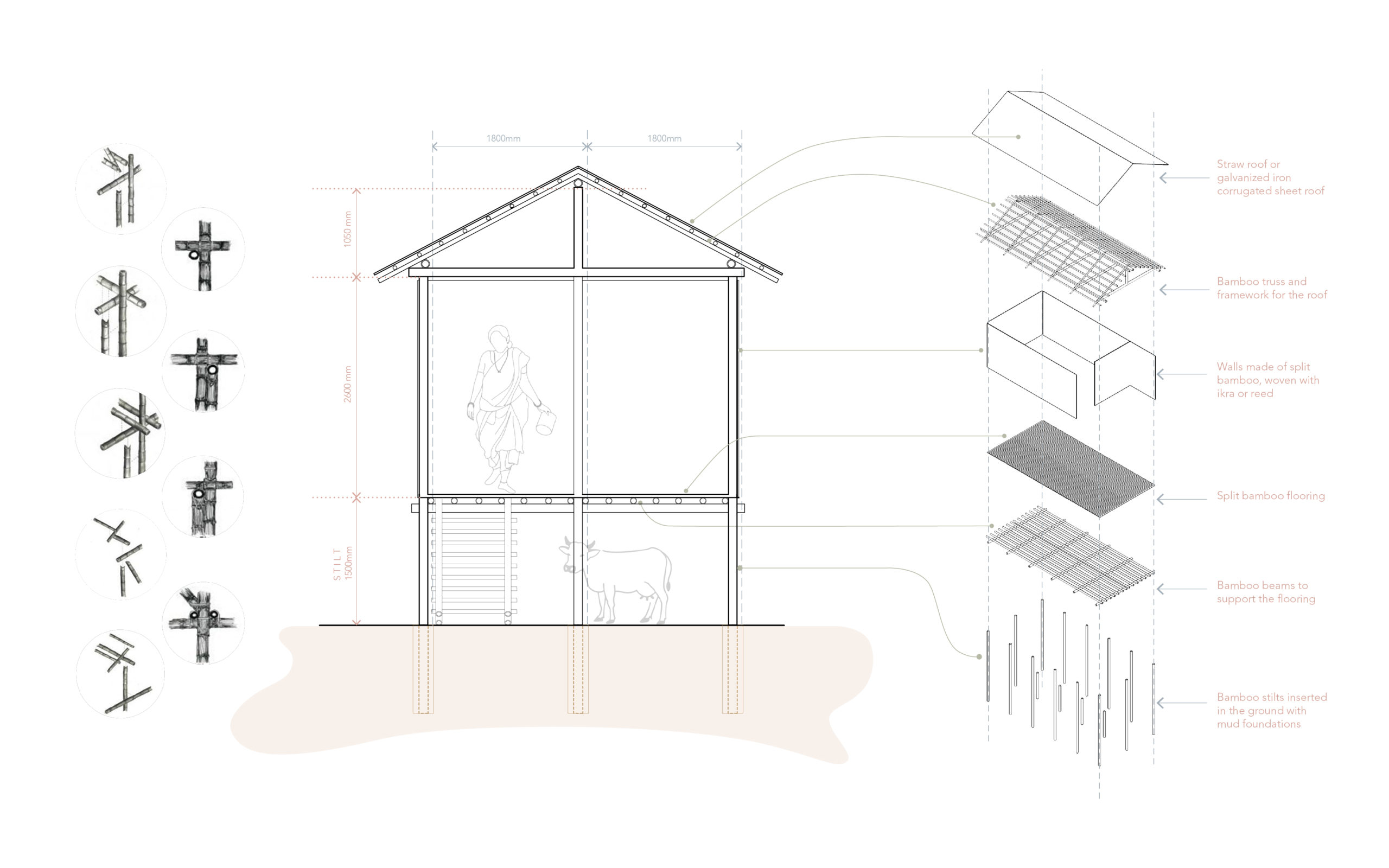
So, what is good and bad about these stilt houses?
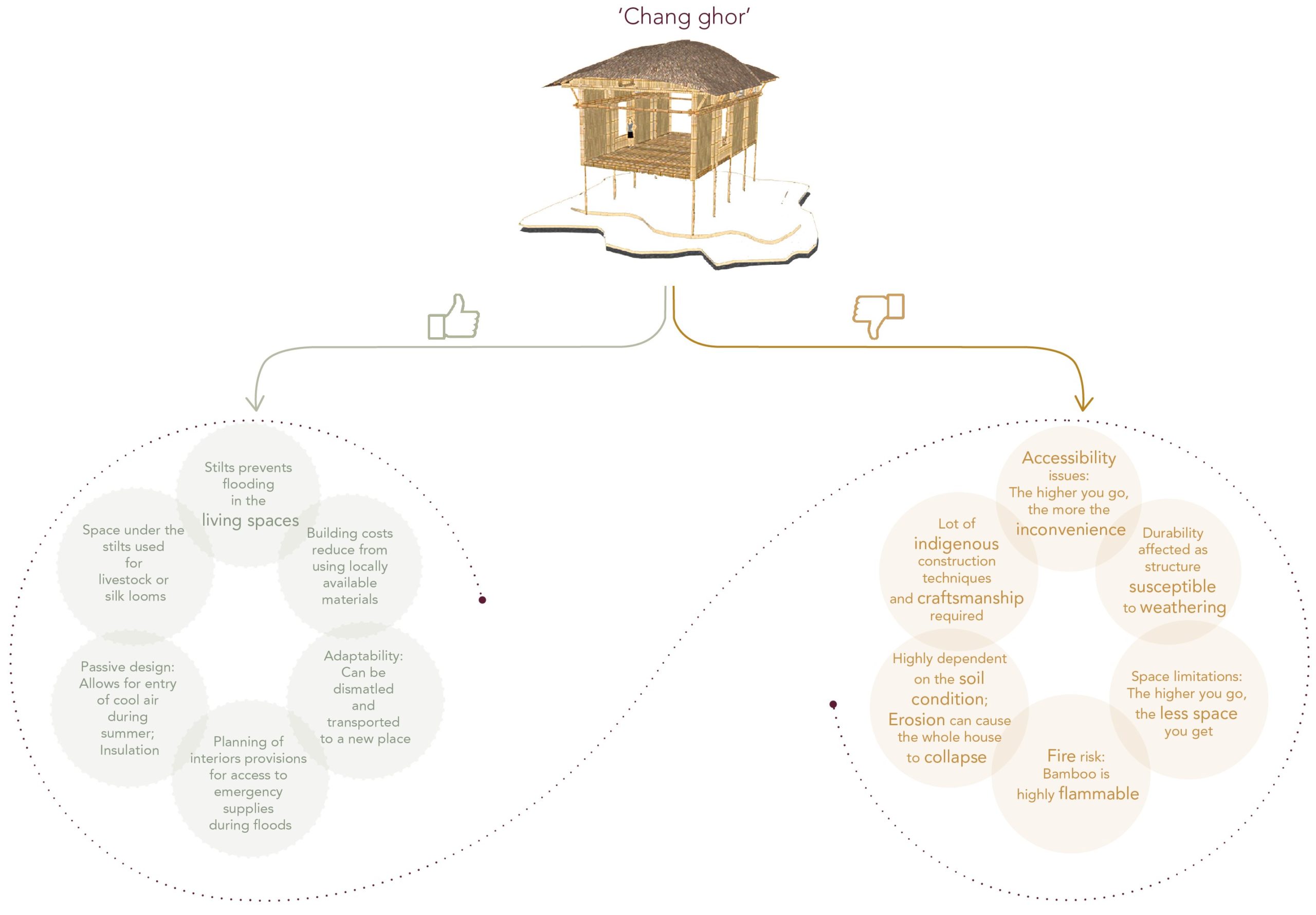
Adaption 02: Floating devices
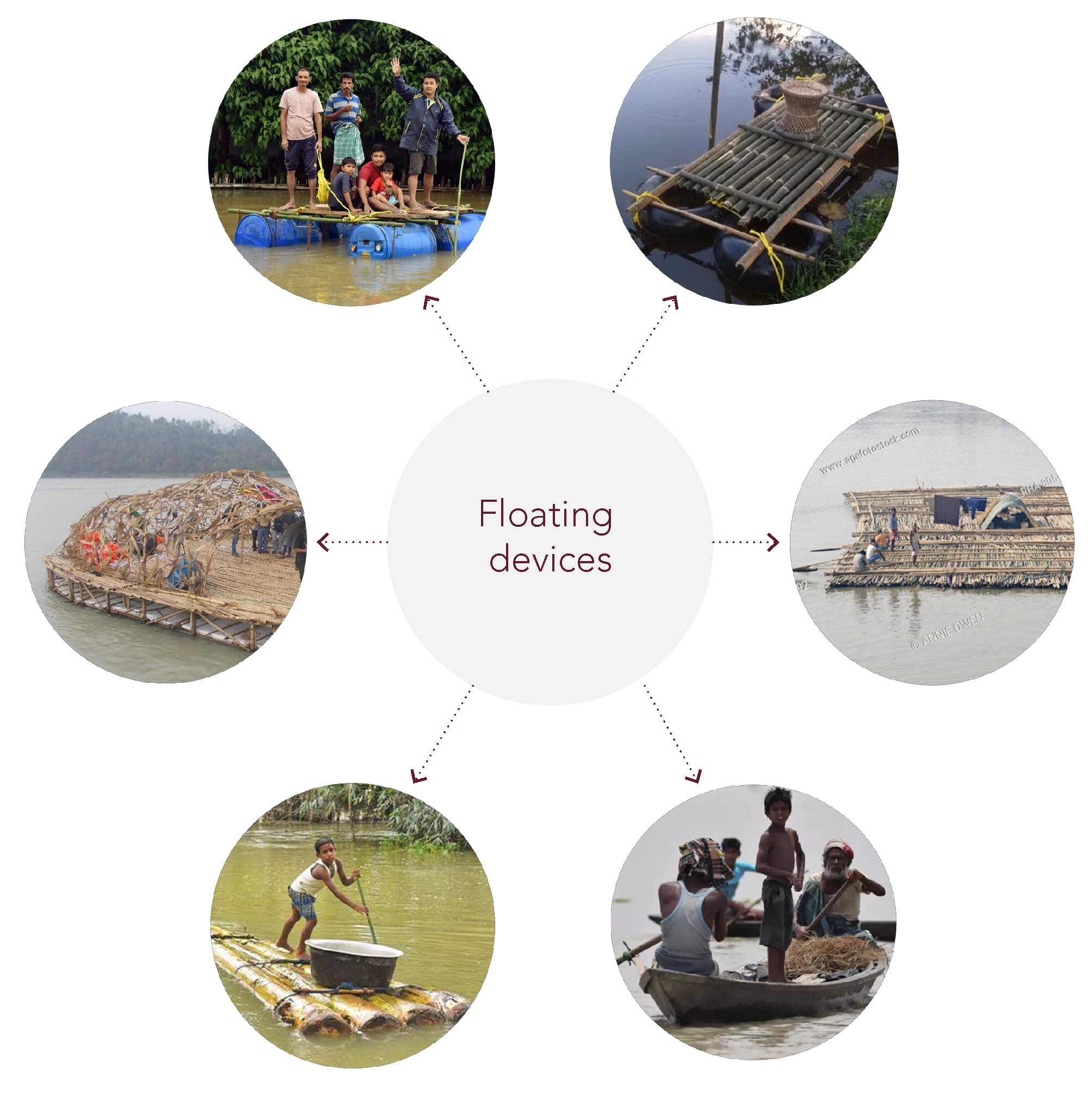
What if, FLOODS=RESILIENCE?
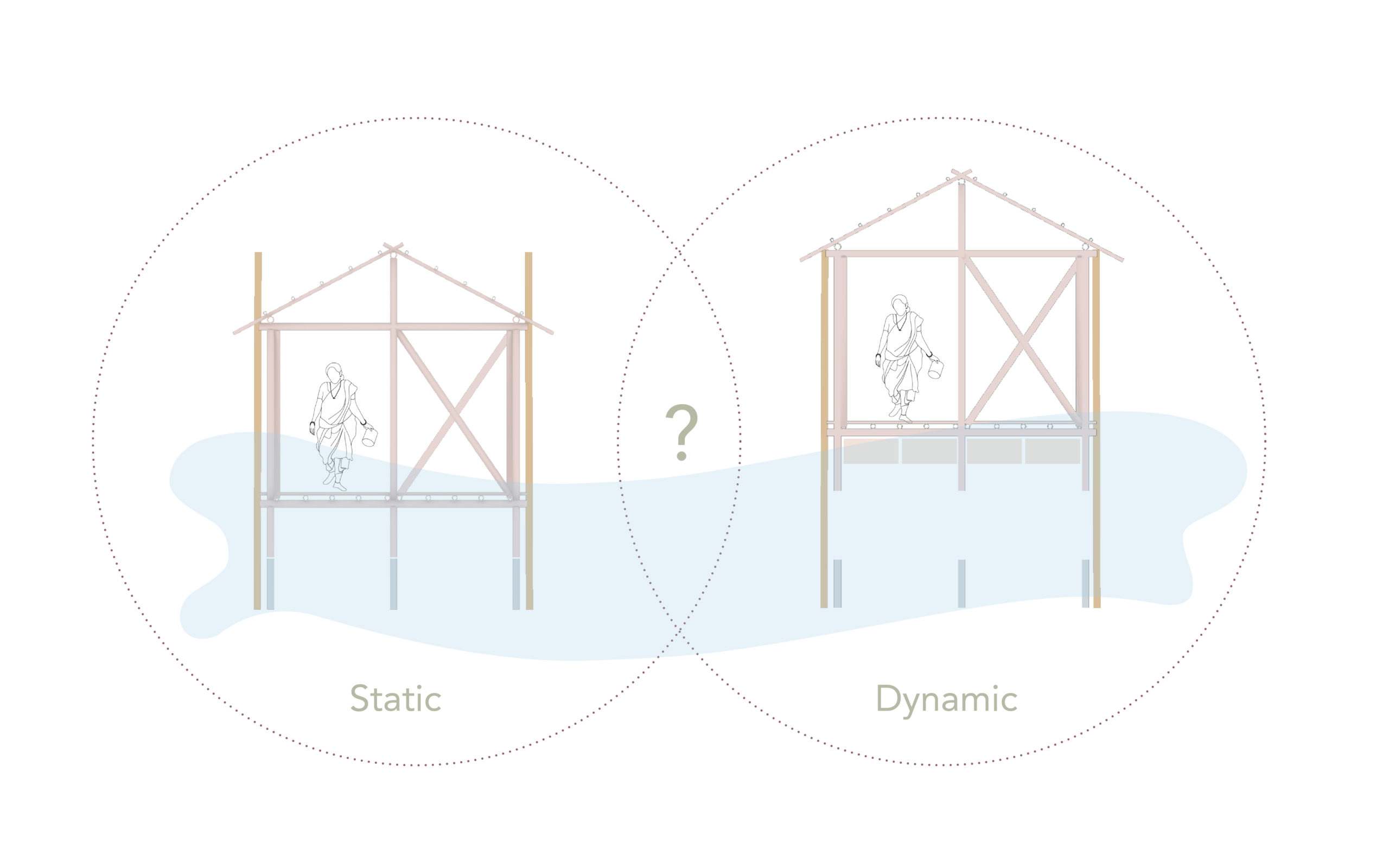
How can we use the principles of a ‘Chang ghor’ design for flood resilience combined with the strategies of a amphibian sub-structure to create an effective retrofit solution for the existing houses using the available resources in Assam, so the residents may survive the floods in the comfort of their own homes?
Why and how is this proposal relevant?

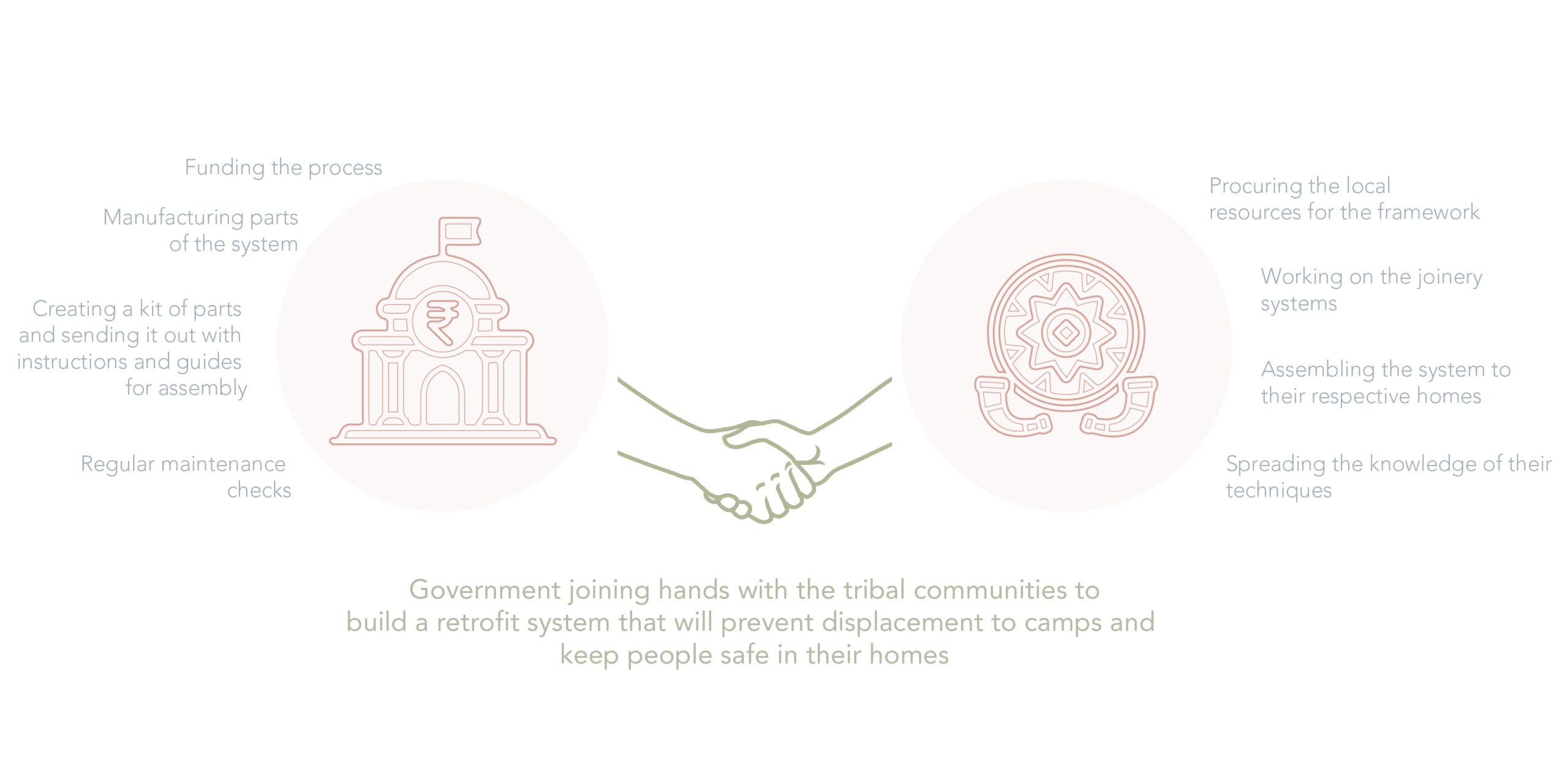
Let’s look at what has already been done in this arena…
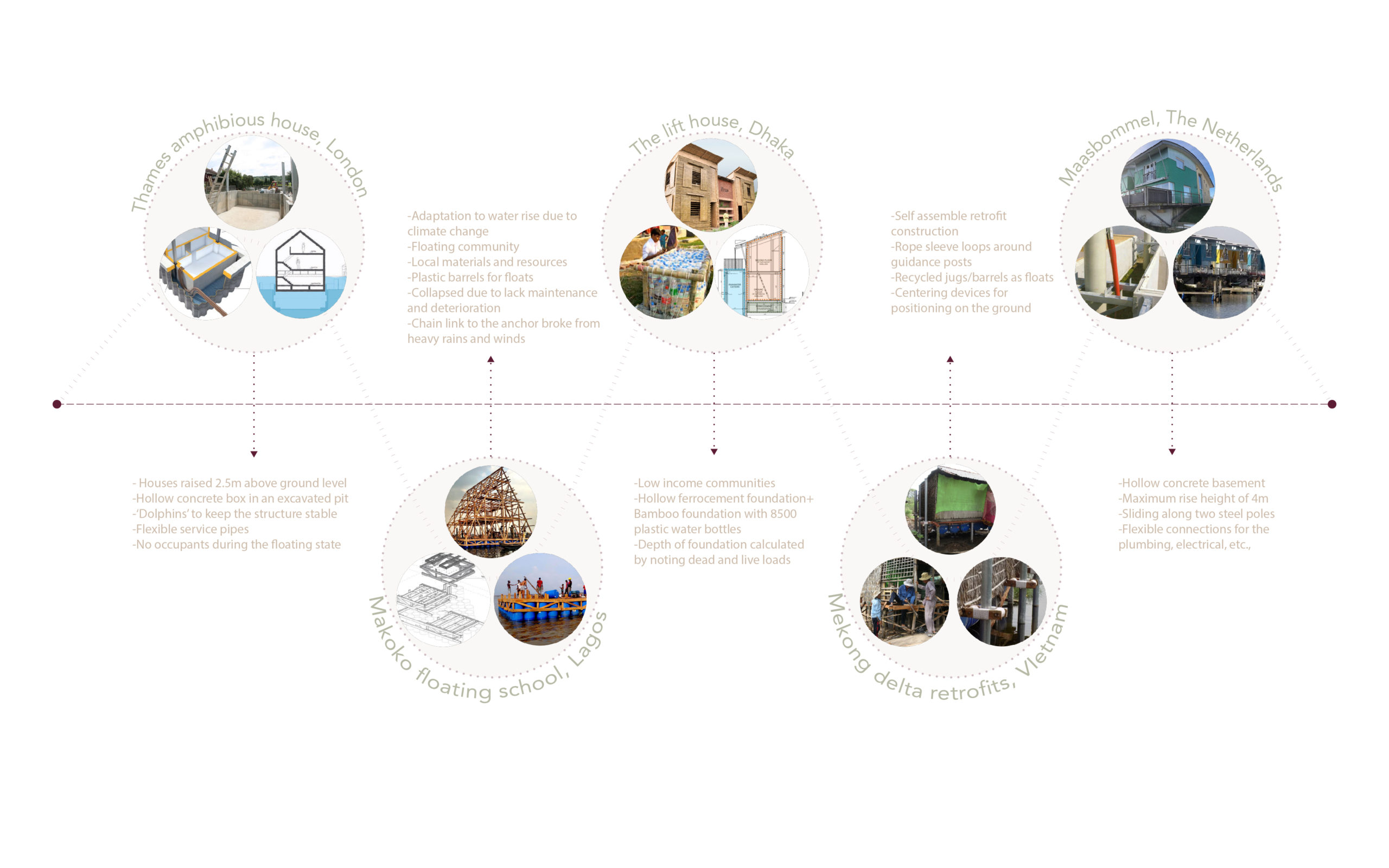
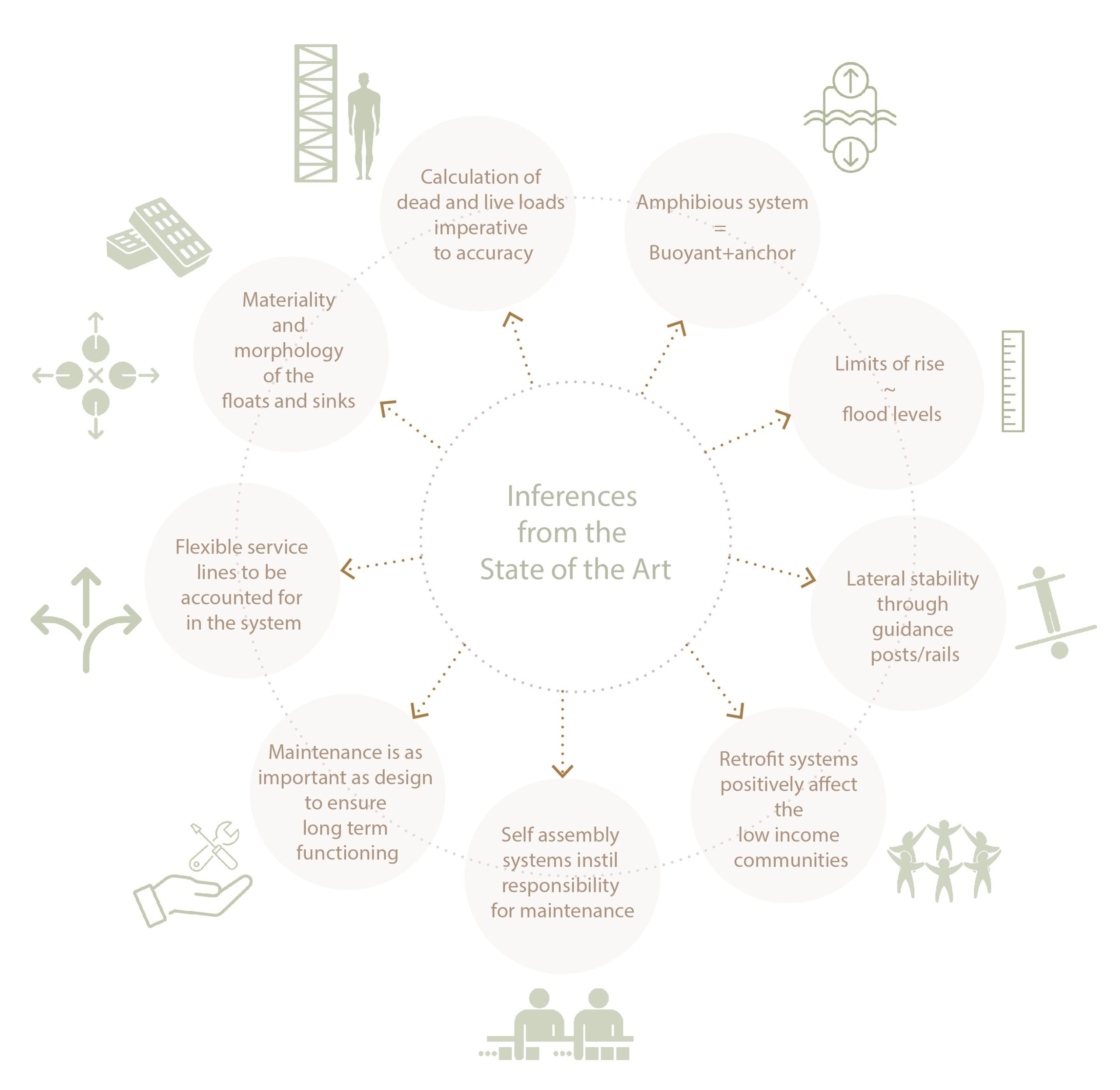
So, in short, what is the thesis project?
The project aims to comprehend the flooding context with respect to the existing infrastructure of the Mishing style stilt houses or ‘Chang ghors’ and propose an amphibious retrofit system that will be an amalgamation of the indigenous construction techniques and the utilization of the industrial and technological resources in Assam to create a kit of parts, provided and funded by the government, that can be assembled and fitted by the Mishing locals to their respective homes in order to survive the floods effectively
Concept for the design system
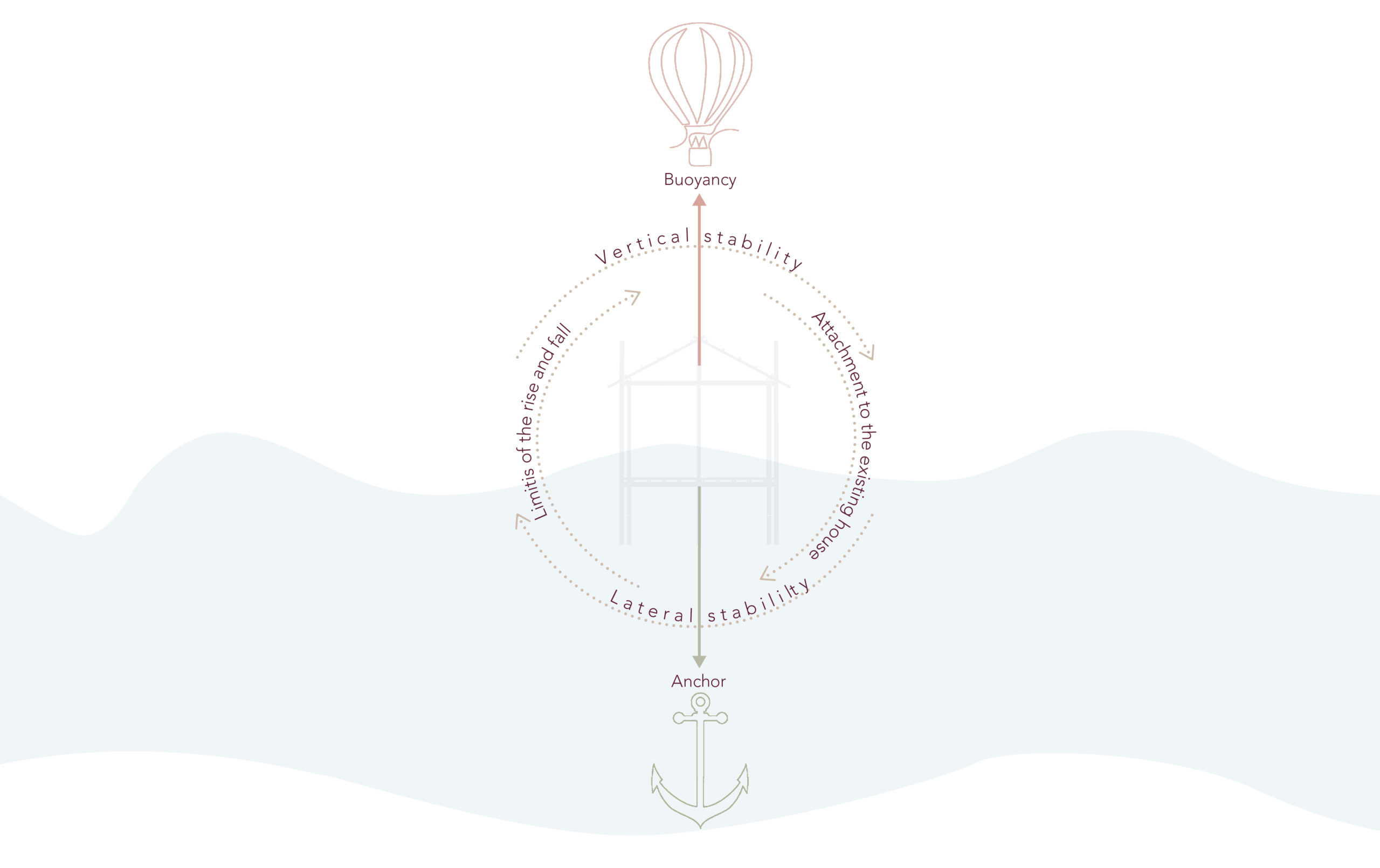
What are the different loads to deal with?

What are the existing resources that we can potentially develop to function in our system?
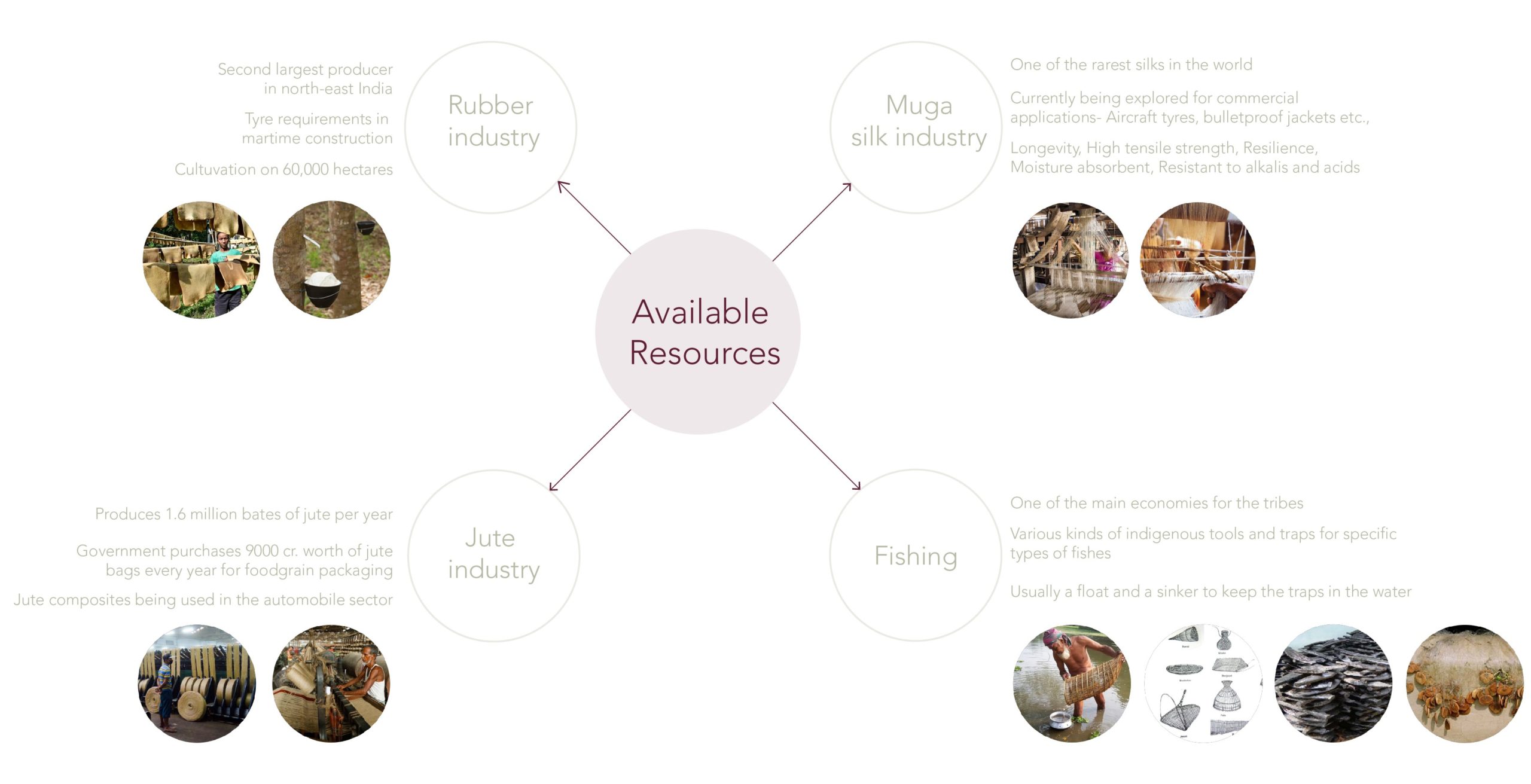
What are the design principles for the retrofit system?
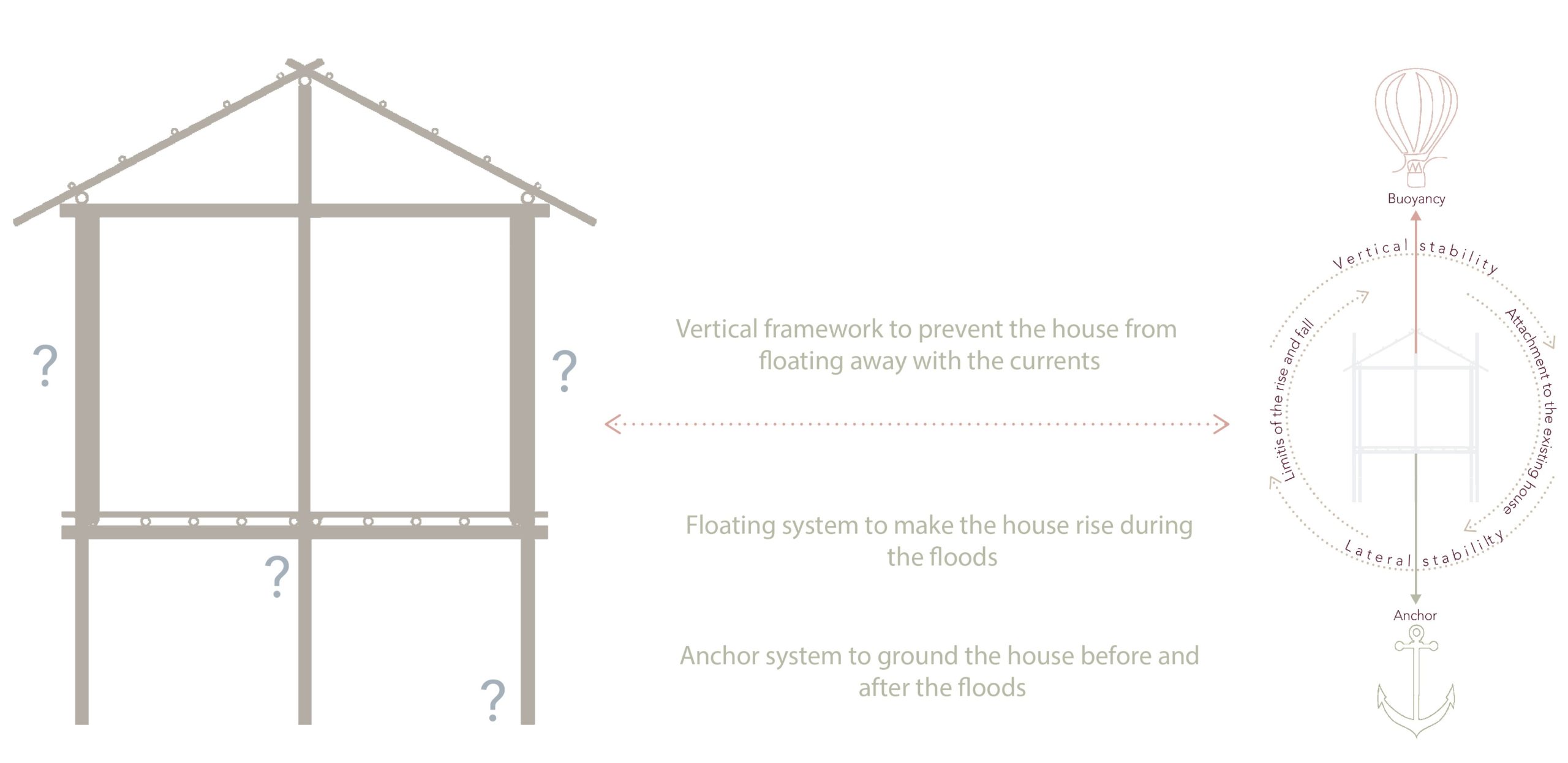
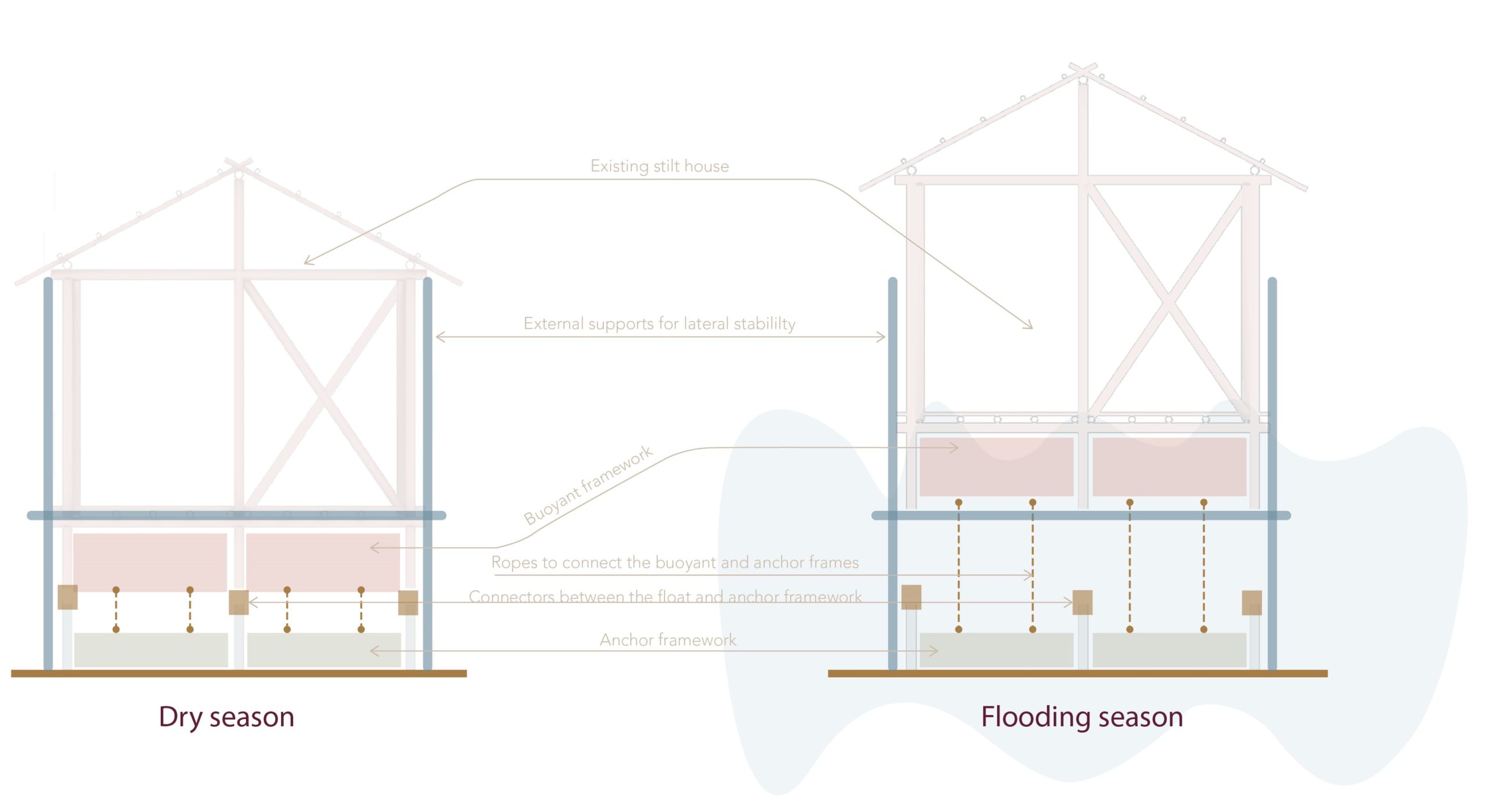
Materiality of the system

Process of assembling
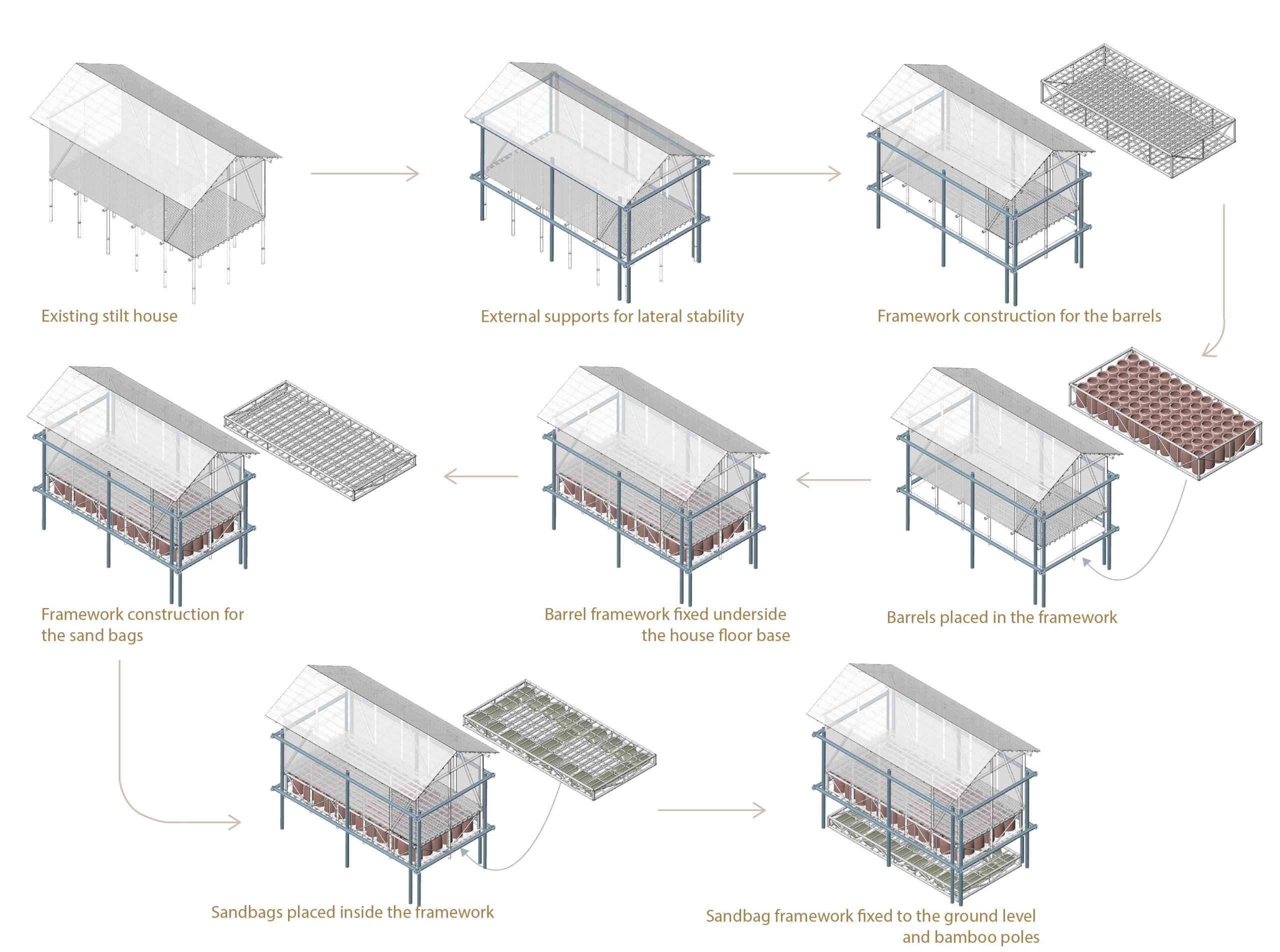
Sectional understanding of system
